Log In
View Upcoming Events
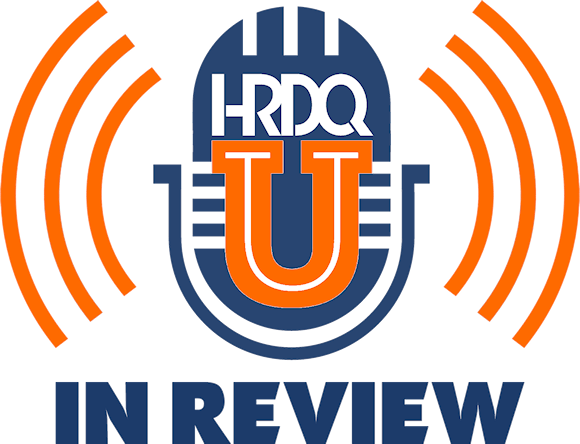
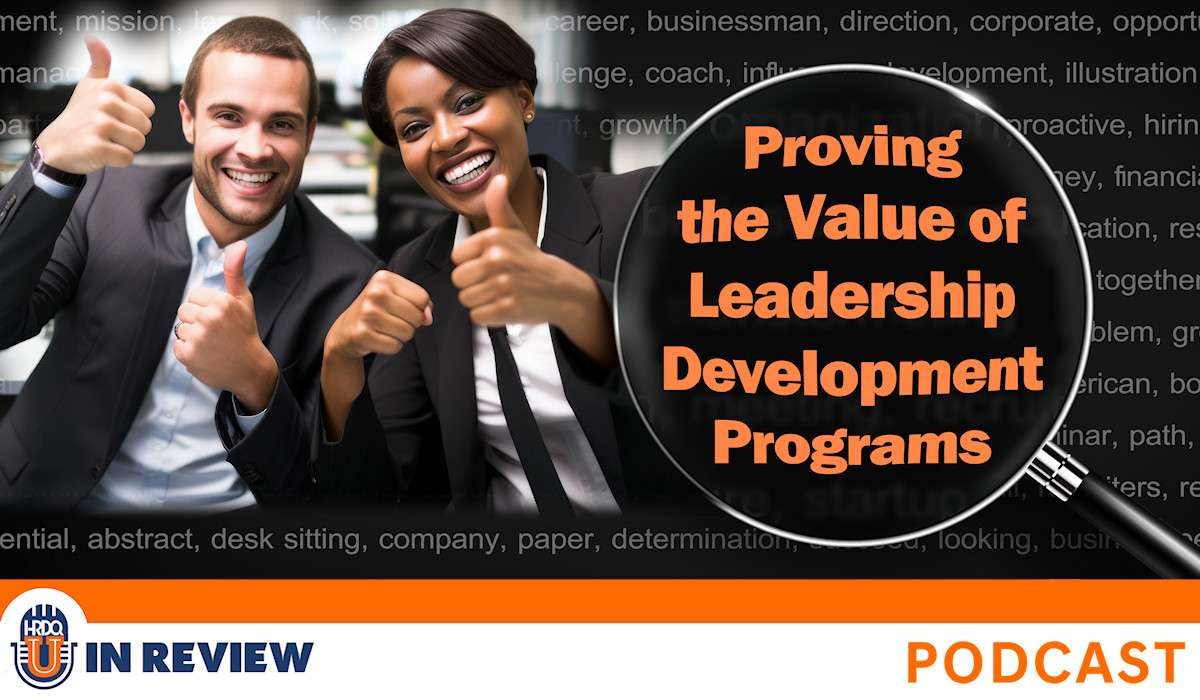
Leadership development is a $370 billion global industry – but how much of that investment is actually paying off? In this episode of the HRDQ-U In Review podcast, host Sarah sits down with Dr. Jack Phillips, founder of the ROI Institute, to discuss how organizations can demonstrate the true value of their leadership development programs. Jack reveals the need to go beyond anecdotal feedback and measure real-world impact.
Jack shares why fear often keeps organizations from evaluating their programs and explains how shifting the mindset – starting with business needs and involving leaders in setting measurable objectives – can drive better outcomes. He breaks down his approach to connecting training efforts to ROI, discusses common evaluation mistakes, and offers tips for collecting credible, executive-ready data.
Whether you’re a leadership development professional, an HR leader, or a business executive, this episode offers straightforward, actionable insights to help you design programs that truly move the needle and demonstrate the value of leadership development programs.
What You’ll Learn
Chapters
Action Items
00:01
Welcome to this week’s episode of the HRDQ-U In Review Podcast, where we bring you the latest insights and practical tools for enhancing soft skills training in your organization. This podcast is brought to you by HRDQU.com, and I’m your host, Sarah, Learning Events Manager at HRDQ-U. And today we are joined by Jack Phillips to discuss the webinar, Proving the Value of Leadership Development Programs.
00:23
Now before we dive in here, be sure to subscribe to our newsletter at HRDQU.com for exclusive updates, upcoming webinars, and resources to help you and your team excel. Jack, welcome. Thanks for joining me today. Thank you, Sarah. It’s good to be here. And before we get into the topic today, can you share a little bit about your background, how you became focused on measuring leadership development, where you got to where you’re at today? OK, great.
00:52
I’d look at three things here. One is in our process of measuring, we do measurement, evaluation, and analytics. We measure all kinds of programs. It turns out that the number one project that we work on is leadership development. And it’s kind of interesting. We get there by having people go through certification and they select a project to work on and that
01:21
of the number one project coming out of there is leadership development. Also in our consulting, we work all kinds of consulting from marketing to innovation to technology, but leadership development is the number one there as well. So that gets us into leadership development, obviously. Second, it’s so important. I experienced that obviously as I went through corporate life and
01:50
ended up as president of a regional banking system. I got there through leadership skills. You don’t get there just on what you know, it’s what you do with what you know. And so I see how important it is for leaders to have good skills and leadership development can really make a difference. And third, teaching leadership development. I came through the learning and development space first.
02:19
in my career and before too long I had to teach leadership development after maybe five or six years there. so teaching it is just inspiring too because you’ve got a group of leaders who need help or they need to get better and it’s always helpful to do that. And my post…
02:47
Post corporate world, I was on the business school faculty at a major state university and I taught in the MBA program. And the course that I always taught was leadership. And it was great to teach these MBA students how leadership makes a difference. So it’s just a powerful concept. It’s a needed concept and we got to keep working to make better leaders.
03:14
Your webinar explores the ROI of leadership development programs. Why do you think it’s difficult for organizations to measure the true impact of these efforts? Well, our number one barrier may surprise you, may not, is that there’s a fear of the outcome. Because we’re evaluating someone’s program. that someone could be something developed internally, maybe using some of the materials from HRDQ. Or it could be an external provider.
03:43
maybe someone from HRDQ. The point is someone owns that program and there’s a concern that maybe it doesn’t deliver business value, maybe a positive ROI. And if they haven’t been requested it, if no one’s requested it, there’s a tendency not to go down this path because I’m concerned, you can imagine. So that keeps us from doing it. And we have some people say that I’m not going to show the value of leadership development until someone makes me do it.
04:13
And we tell them, you know, it’s that’s a little late then because you often get a request. got a short timeline to, to deliver. You won’t know how to do it and you won’t be able to deliver. And now you’ve been defensive because you’re defending something you’ve just done. And third, you got ROI on someone else’s agenda. Keep it on your agenda. So that’s the big thing. It keeps us from doing it. We think. And of course there’s.
04:41
Some people just don’t know how to do it. So if you don’t know how to do it, you think it can’t be done. Now, for those that are listening today that weren’t able to attend the webinar, can you share with a of the key takeaways or insights that you would hope someone would walk away with from attending that webinar event? Well, first, that it needs to be done. And if you don’t think it needs to be done, go ask your senior executives.
05:08
would they like to see the ROI on your best leader, on your number one leadership program or just the impact it has. And I, I bet you a bottle of the best red wine you can find that they’re going to say yes. So they need it and they want it, but it’s good to know it because it helps us make it better if it’s not working as well. So it needs to be done from that perspective.
05:39
And the people who delivered it need to be recognized for their good work. And you get more support for it, more commitment for it. So there’s all good reasons to do it. So keep that in mind. And also know that it can be done and is being done. It’s not something that’s a fluke that rarely ever happens. It’s a routine system. We even have something that’s the…
06:05
best practices in ROI studies. That’s something that’s a giveaway or takeaway from the session that we had. And so you shared some common mistakes organizations make when trying to prove the value of leadership training. Can you highlight one that really stands out? Yes, I think number one is not connecting to the business in the beginning. They start with behavior. They need to know that they need this behavior. They need this
06:35
We’re forgetting why they need that. So we should really start with a problem or an opportunity. And it may be down to them some problem or opportunity, but a measure that reflects that. So we fail to do that. We just start with the end in mind being leadership, I mean, leader behavior. The end is really the impact of leadership behavior.
07:05
And what are some practical ways learning and development teams can start tracking the impact of their programs more effectively? just I’d say one of the most easy, one of the most interesting and easy things to do, but yet resisted by so many is to let the leader who’s coming to the program identify a measure or maybe two that they would like to change. Something that
07:34
It’s in there, see they’re leaders of a team normally. So a team measure that you have that you’d like to improve, maybe two of them, but only if you can improve them using these competencies. Now the good thing about leadership development is very powerful, very versatile. You know, you’re motivating people, you’re communicating, you’re involving people. It’s so powerful when you do that.
08:01
You can look at that measure and say, think I probably could improve that with this. So now that becomes the starting point for the program. So now it’s their program because it’s their measures. And the reason they’re there now is not to just learn leader behavior and change my behavior, but they’re there to get those measures changed. So the ownership really shifts from it’s now their program compared to I’m going to your program.
08:32
And so just that little technique was shifted so dramatically and deliver results that they will see because they are tracking that measure now that they have identified and they want to see it move. So you’re going to get more success and you’re going to have more great stories to tell at the end. that alignment. And part of that process, another little technique is to let them have an action plan built around improving that measure.
08:59
I want to improve this measure, here’s what I’m going to do different with my team to get there. And then you report that on an action plan. So using an action plan with a pre-program connection to two business measures they’d like to improve, that’d be two action plans. That’s easy to do, makes a world of difference. So how can L &D professionals communicate program results in a way that resonates with executives or other stakeholders? That’s a good question.
09:29
They love ROI and they love impact. Impact is a measure, even if it’s impact measure at a lower level manager, it’s going to roll up into the organization as the measure’s at the top, I should say. So they love that kind of data. What they don’t love so much is just the behaviors. So when you put that in front of them though, you’ve got to sort out the effects of what…
09:57
you’ve done from other influences. That makes it credible because without it you’re not credible. So when you’re presenting this to executives, you’ve got to be credible. We have five different sub-steps in this area of analysis. Every one of them start with make it credible, make it credible. And so that’s what you need to focus on with executives and managers when you’re presenting a result, make it credible. When you get to ROI, they want to know how did you get the money?
10:27
Is that credible? Which cost did you put in? Did you put all the costs in? That makes it credible when you put all the costs in. So make sure you focus on the credibility of the data because without it, you’re going to lose them quickly and they won’t support you anymore on this. And Jack, does leadership development have value even if it doesn’t immediately move the needle on the financial metrics? That’s a great question. I get that all the time. And what they’re thinking is
10:56
hey, we’re training all of these managers, you know, like 5,000 managers, and it takes us, you know, two years to do it or one year to do that. And so they’re thinking, I won’t see anything until three years from now. So it’s like, we’re going to put the program in two years from now, look for a measure that that seems a little odd and it doesn’t sound so good. But in reality, that’s not what happens.
11:26
As soon as you train someone, you’ll get application, that is they’ll start doing it usually within the next day, within the next week. In three weeks you can get that data. And impact usually occurs sometime immediately, probably no more than, for most measures, no more than two, three months. So you can have improvement in two, three months, but it’s just for that first group that you train.
11:56
It takes a while to get it all in place. It’s particularly true with culture. You know, it takes you a while because it takes so long to get it everywhere and get it working where you want it to. So look at the first group that goes through and report that out. And that’s going to be three months after you started the journey. That looks a little better to executives. So you got some more needles coming that’s going to change, but not until they go through the program.
12:26
It’s just that we can’t get them all through at the same time unless we have some huge push with virtual learning maybe. And if someone is just starting to think about measuring their leadership development programs, what’s one step they can take today to get going? Go beyond level two. We know you measure reaction and learning. That’s level one and level two. Push it out to level three and forward. Don’t do three now and then four later. Look at both of them together.
12:54
They go together, just like reaction and learning go together because the learning you have reflects your reaction. Application and impact go together. Application is needed for impact. When you get impact, you often want to do more. That’s more application. So you’ve got those two connected. Push it out there and start collecting data and see what you have. You’ll learn some things because you’ll do some things.
13:23
maybe that don’t work so well, but get started with this journey. Don’t wait for someone to ask you, this is the right thing to do for so many reasons. So get started and think about setting objectives. We’re good at learning objectives, but let’s start writing application objectives and put them in front of our audience. And write impact objectives, or have them write the impact objectives. So think about objectives that give us a direction and guidance of where we’re going.
13:51
but move to level three and level four together. And finally, Jack, where can listeners connect with you and learn more about your work? Well, we’re at the ROI Institute. You can go there, but our website is roiinstitute.net. It’s not dot com, but dot net. You can contact me directly at an email, and I’d be happy to discuss this with you. That’s jack at roiinstitute.net. And I’m still
14:19
answer the phone these days just like most people. Well, I’m not sure most people do, but 205-542-5664 will get me right to my cell phone and we can have a talk in just a few minutes. Great. And if you have yet to check out the webinar, check that. It’ll be linked below. I highly recommend you give that a watch. There was so much great information there as well. Jack, thank you so much for your time today. My pleasure.
14:48
Thank you so much for having us here. And we hope you enjoy listening to the HRDQ-U In Review podcast, available on all major streaming platforms. If you did enjoy today’s episode, make sure to give us a follow and leave us a five-star review. Thank you all for tuning in to this week’s episode of the HRDQ-U In Review podcast, brought to you by HRDQU.com.

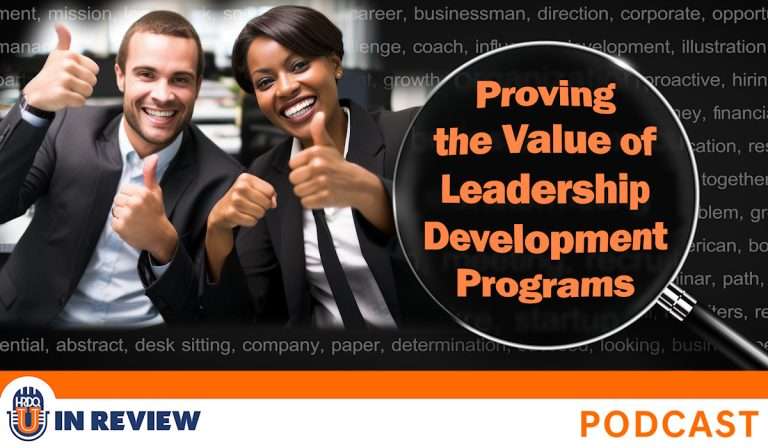
Listen to this podcast event at no charge with your
HRDQ-U Free Access Membership
Leadership development is a $370 billion global industry – but how much of that investment is actually paying off? In this episode of the HRDQ-U In Review podcast, host Sarah sits down with Dr. Jack Phillips, founder of the ROI Institute, to discuss how organizations can demonstrate the true value of their leadership development programs. Jack reveals the need to go beyond anecdotal feedback and measure real-world impact.
Jack shares why fear often keeps organizations from evaluating their programs and explains how shifting the mindset – starting with business needs and involving leaders in setting measurable objectives – can drive better outcomes. He breaks down his approach to connecting training efforts to ROI, discusses common evaluation mistakes, and offers tips for collecting credible, executive-ready data.
Whether you’re a leadership development professional, an HR leader, or a business executive, this episode offers straightforward, actionable insights to help you design programs that truly move the needle and demonstrate the value of leadership development programs.
What You’ll Learn
Chapters
Action Items
[ PODCAST PLAYBACK ]
You must be signed-in with your membership account to access this content.
Enjoyed this podcast? Have suggestions on how we can improve? Please take our quick survey and receive a coupon for 15% OFF any of our individual membership plans.
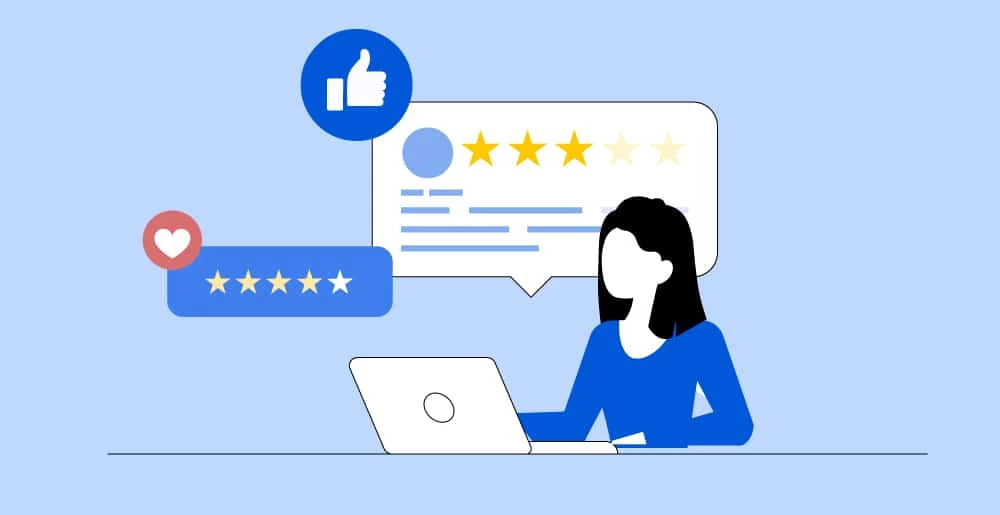
*Instant 15% coupon available upon completion of survey.
Want to learn more? Become an Individual or Corporate member to watch this and hundreds more webinars!
Prove the value of your leadership development programs with real-world examples and strategies to drive impact, ROI, and measurable success.

Jack J. Phillips
Jack J. Phillips, Ph.D., chairman of ROI Institute, Inc., is a world-renowned expert on accountability, measurement, and evaluation. A former bank president and HR executive, Phillips consults for Fortune 500 companies and major global organizations. The author or editor of more than 75 books, he conducts workshops and presents at conferences globally.
Jack has been recognized and awarded for his work by numerous professional organizations. He, along with his business partner and wife, Patti Phillips, received the 2024 Thought Leader Award from the Association of Learning Providers (ISA), the 2022 Association for Talent Development (ATD) Thought Leader Award, and the 2019 Center for Talent Reporting Distinguished Contributor Award. In 2019, he and Patti were named as two of the top fifty coaches globally by the Thinkers50 organization and named a finalist for the Marshall Goldsmith Distinguished Achievement Award for Coaching. SHRM presented Jack with its highest creativity award for an ROI study and awarded an ROI Institute book with a best book award. His work has been featured in the Wall Street Journal, BusinessWeek, and Fortune magazine, and he has been interviewed by several television programs, including CNN.

Training Tools for Developing Great People Skills
This event is sponsored by HRDQ. For 45 years, HRDQ has provided research-based, off-the-shelf soft skills training resources for classroom, virtual, and online training. From assessments and workshops to experiential, hands-on games, HRDQ helps organizations improve performance, increase job satisfaction, and more.
Learn more at HRDQstore.com
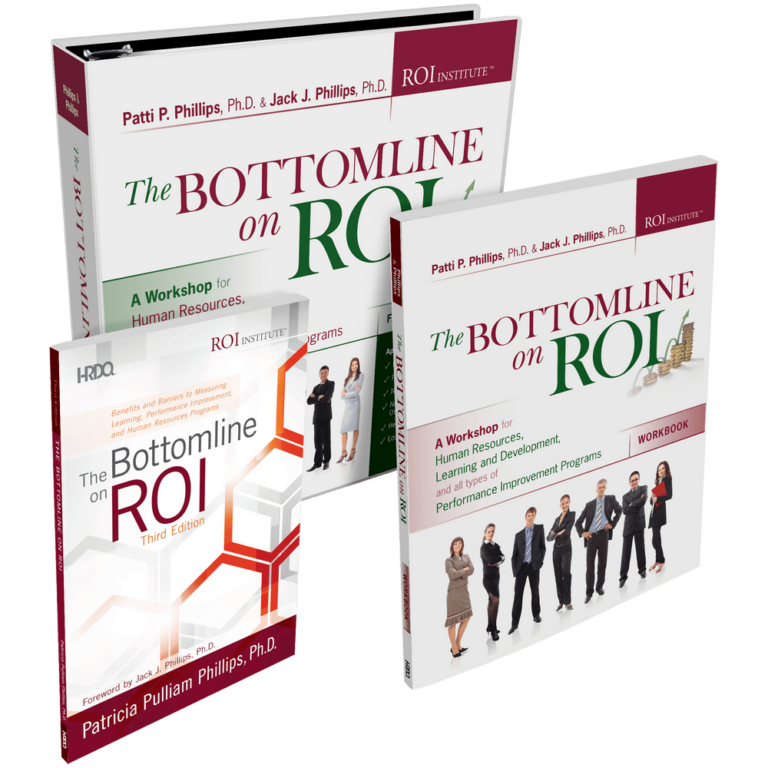
Bottomline on ROI
Turn learning initiatives into measurable outcomes. Gain practical strategies, explore real-world case studies, and engage in interactive exercises designed to help trainers evaluate and communicate the impact of soft skills and leadership development programs.
Buy at HRDQstore.com
The Bottomline on ROI 2nd Ed. Paperback Book
Gain essential insights and tools to connect learning and development efforts with organizational success. This resource empowers leaders to align training programs with measurable outcomes and confidently communicate their impact to senior leadership.
Buy at HRDQstore.comThe HRDQ-U In Review Podcast, brought to you by HRDQU.com, brings you the latest insights and practical tools for enhancing soft-skills training in your organization. As a learning community for trainers, coaches, consultants, managers, and anyone passionate about performance improvement, we interview subject matter experts and thought leaders from recent webinars they presented with us to take a deeper dive into the content they shared and answer all your questions. Join us as we explore new ideas and industry trends, share success stories, and discuss challenges faced by professionals.
The HRDQ-U In Review Podcast is intended for HR and training professionals, organizational development practitioners, and anyone interested in improving workplace performance and productivity.
New episodes of HRDQ-U In Review are released every week.
The length of the episodes varies, but they typically range from 15-30 minutes.
The podcast covers a wide range of topics related to HR and organizational development, including leadership development, team building, communication skills, conflict resolution, employee engagement, and more.
No, HRDQ-U In Review is completely free to listen to.
You can listen to any available HRDQ-U In Review Podcast right on our website at HRDQU.com via our embedded Spotify player on the related webinar page. In addition to our self-hosted option, you can find the HRDQ-U In Review Podcast on many of the popular streaming services, which are listed above.